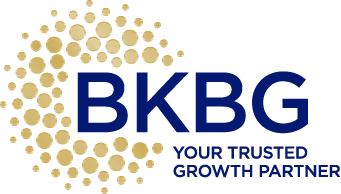Boosting Customer Conversion with In-Store Communication
Local businesses need to leverage every opportunity to convert leads into loyal customers —this is nothing new. And while digital marketing plays a crucial role in attracting potential clients, it’s often in-store communication and marketing efforts that can significantly enhance customer conversion rates.
Service providers, local such as kitchen and bath remodelers, face unique challenges in creating a seamless online and in-store marketing experience due to the complexity and customization involved in their services. Unlike retail businesses that can directly showcase products online, service providers often require personalized consultations to understand client needs, which complicates the transition from digital interaction to in-store experience.
This means local service providers need to get creative, finding solutions that connect online and offline marketing strategies to increase customer engagement. Here's how to effectively integrate in-store communication with your digital efforts to boost your local service business.

The Importance of a Cohesive Strategy
A cohesive marketing strategy ensures your message is consistent and reinforces your brand identity across all platforms. For kitchen and bath remodelers and similar service providers, this means integrating your online presence with the physical experience in your showroom or shop. When customers receive the same message, whether they're browsing your website or visiting your store, it builds trust and recognition.
Consider this: A potential client discovers your website, where your expertise in modern bathroom renovations is highlighted. When they visit your showroom, they should encounter a similar narrative that emphasizes your proficiency in this area. This consistent messaging helps solidify your brand's authority and encourages customers to proceed with a purchase or consultation.
Effective In-Store Communication Techniques
- Interactive Displays: Transforming your showroom into an interactive experience can significantly enhance customer engagement. Use digital kiosks or tablets to allow customers to explore design options, view before-and-after project photos, or even use augmented reality to visualize remodels in their own space. This hands-on interaction can make your offerings more tangible and memorable.
- Clear Signage and Information: Ensure your in-store signage is clear and informative. Highlight key selling points, such as special promotions, unique services, or awards and recognitions. This information should align with what customers see online, reinforcing the benefits of choosing your services.
- Personalized Consultations: Encourage customers to book in-store consultations for a more personalized experience. Train your staff to ask questions about the customer's needs and preferences and use that information to tailor the discussion. Personal touches, like offering coffee or refreshments during consultations, can enhance the customer experience and create a welcoming atmosphere.
- Feedback Mechanisms: Implement feedback systems, such as suggestion boxes or digital surveys, to gather customer opinions on their in-store experience. Use this feedback to continuously improve your in-store marketing efforts and address any pain points.

Integrating In-Store and Digital Efforts
- Cross-Promotion: Use digital channels to promote in-store events such as open houses, workshops, or special sales. Encourage online followers to visit your showroom by offering exclusive in-store discounts. Conversely, use in-store signage to promote your social media profiles or website, encouraging customers to engage with your brand online.
- Unified Branding: Ensure that your branding elements, such as logos, color schemes, and messaging, are consistent across all customer touchpoints. This consistency strengthens brand recognition and reassures customers that they are dealing with the same trusted business, whether online or offline.
- Customer Data Integration: Use customer relationship management (CRM) systems to track customer data from both online and in-store interactions. This data can provide valuable insights into customer preferences and behaviors, enabling you to tailor marketing efforts and improve the customer experience.
Balancing Your Digital and In-Store Strategy
By focusing on a cohesive strategy that seamlessly integrates digital marketing with in-store communication, local service providers can enhance customer engagement and increase conversion rates. The key is to create a consistent, memorable experience that reinforces your brand's value and encourages customers to choose your services for their remodeling needs.
With the right approach, you can turn potential leads into satisfied clients who are eager to recommend your business to others.
Get the Latest Content in Your Inbox
Want to be the first to know about new content? Sign up to get our weekly blog posts sent to your email!





